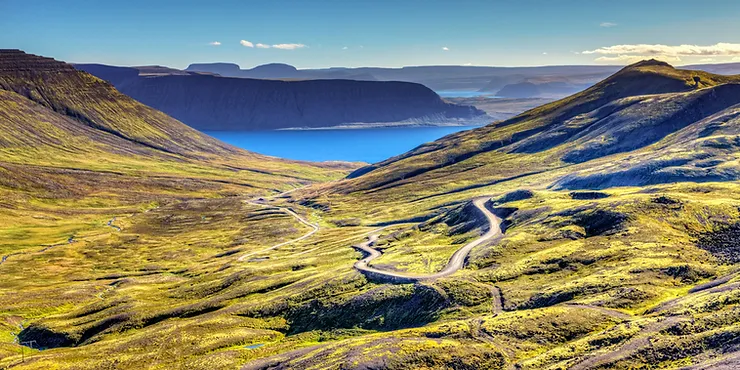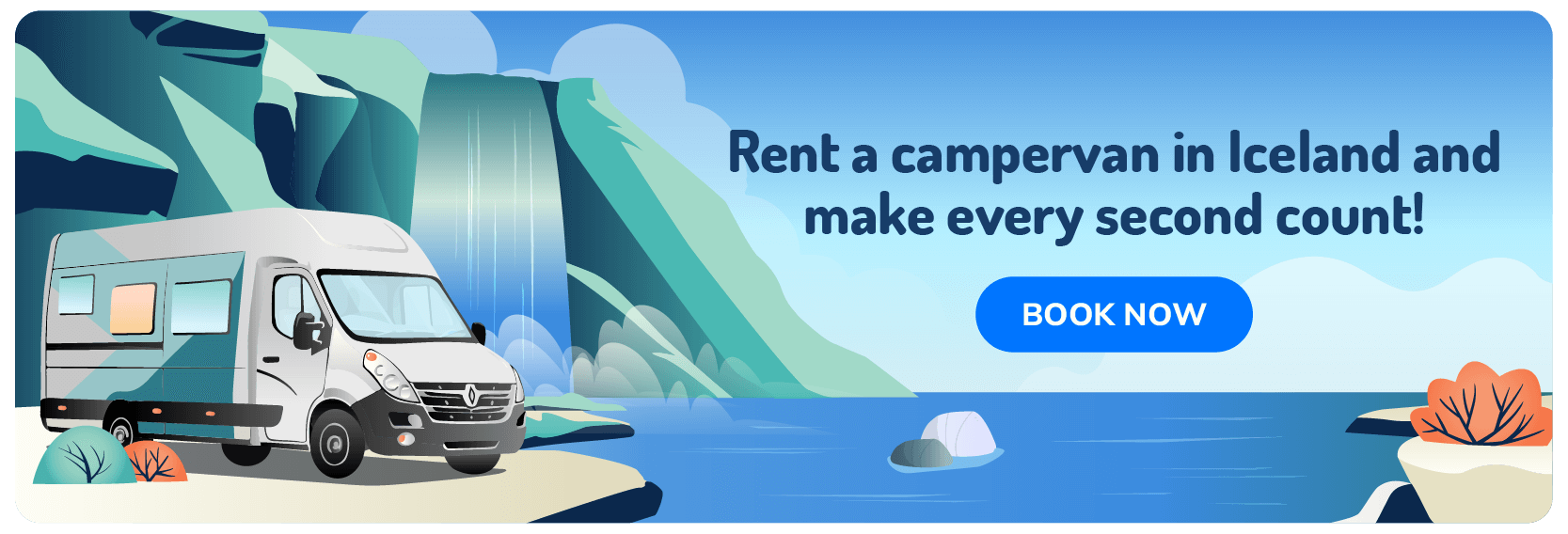Everyone has heard of the famous Golden Circle or Iceland’s Ring Road route. But what about Iceland’s more distant corners? This incredible country with its vast swathes of uninhabited wilderness has so much to discover.
One of our favorite off-the-beaten-path road trips has to be an adventure to the remote and beautiful Westfjords. Taking a road trip around this hidden gem offers a wealth of experiences. Not least the chance to drive on its dramatic and downright deserted roads.
The Westfjords are definitely one of the least visited regions of Iceland. However, this is soon set to change with the opening of the new Ring Road 2 scheduled for late 2020. This new route will make the whole area much more accessible for driving.
This is great news if you are planning on hiring a campervan for an adventurous road trip. Driving in Iceland can sometimes be a challenge so anything that helps smooth the way is very welcome. In this article, we will explore the highlights of the Westfjords along with the practicalities of visiting and driving there.
Where are the Westfjords and how to get there?
The magical Westfjords are located in Iceland’s much less visited northwest corner. The area takes the geographical form of a highly irregular peninsular with a narrow entry point. One look at the map and you’ll see that it is zigzagged with long fjords. These fjords cut deeply into three main fingers of land that make up the peninsular.
This geographical phenomenon means that driving here can be quite time-consuming. It may take quite some time to wind your way around the coast but the rewards are many. Startlingly beautiful views and sweeping landscapes await you at every turn.
In terms of getting there, the gateway to the Westfjords is about a two-hour drive from Reykjavik. From there you could choose to head along the southern coast through the town of Búðardalur. This is the more challenging area for driving as it is the least inhabited. Because of this, the roads are a little rougher. You’ll find many stretches of gravel roads here and there are some high mountain passes to negotiate.

Alternatively, you might decide to head to the north coast first. Along this stretch of coastline, you will find most of the Westfjords’ settlements. This includes the largest town Ísafjörður with its 2600 inhabitants. Another popular way to reach the Westfjords is by one of Iceland’s ferry routes. If you are hiring a camper or rental car you can board a vehicle ferry from the Snæfellsnes Peninsula. The crossing takes about 2.5 hours and makes for a fun and different experience.
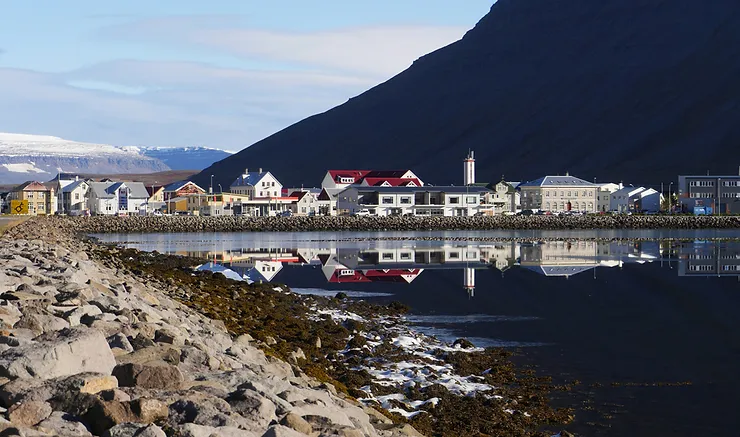
What are road conditions like?
As mentioned the road conditions in the southern reaches of the Westfjords are a little more rustic than the north. There are mountain passes that cannot be tackled in winter. Even in summer drivers need to be very cautious. The weather in Iceland is changeable and can get quite wild year-round. So you should always check the weather forecast and set off with plenty of daylight hours. There are also many stretches of gravel roads across the region. These roads are unsuitable for a motorhome and would be more easily managed in a 4 x 4 vehicle.
However, there are works afoot to open up the magic of the Westfjords to more visitors. As mentioned earlier the opening of Ring Road 2 is set for the fall of 2020. This route incorporates a tunnel that will replace the trickiest mountain pass in the region. The Dynjandisheiði pass can be a dangerous place and is completely impassable in the winter months.
The Ring Road will form a loop of the well-kept tarmacked road right the way around the region. This means that the driving will be smooth and the tunnel will cut out the trickiest mountain roads. This brings the welcome news that it will be possible to drive the Westfjords Ring Road in a motorhome rental. This really is a welcome change as driving a motorhome here was pretty much out of the question before.
When to visit the Westfjords
As with any road trips in Iceland the summer months offer the best overall conditions. And this is especially true in the Westfjords. Summer days in Iceland are long and the weather is generally milder and more settled. If you do decide to explore Iceland in winter then shorter road trips in the south are advised.
How long will a Westfjords road trip take?
This question very much depends on your travel style. If your trip to Iceland is a leisurely one you could easily spend a week. If you are shorter on time then you could just dip into the region for a day or two.
The full Ring Road 2 will cover a distance of some 590 miles (950 km). So you could relatively comfortably drive the loop in two days with a few stops along the way. However that would mean a good five hours of driving each day. To make the most of it and to make a few detours we recommend 3-5 days.
Highlights of the Westfjords
Wildlife watching in the Westfjords
The wilds of the Westfjords have been pretty much left to their own devices. There are no grazing animals here so the flora is very much au natural. In fact the landscapes and coastal cliffs are quite lush with wild flowers and grasses.
It is in the quiet corners of the interior that you might catch a glimpse of the Arctic Fox. These shy and elusive creatures are the only native mammal amongst the current animals in Iceland.
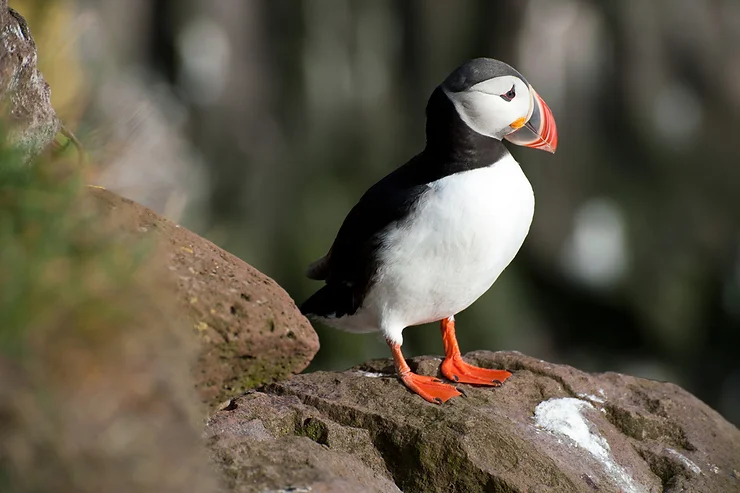
Their much noisier neighbors are to be found on the coastal cliffs of the fjords. Puffins flock to the region in the summer building their burrows on the cliff edges. The best place to see these diminutive birds is on the Látrabjarg Cliffs. This area has been nicknamed bird cliff as it is absolutely teeming. There are many other species of bird to look out for too.
Visiting Raudasandur Beach
This is one of Iceland’s most striking red sand beaches. Vast open swathes of swirling rust and pink colored sands contrast with the deep blue of the ocean. Taking a stroll along the sands will definitely freshen you up after a few hours behind the wheel. You will find the Raudasandur red sand beach in the western Westfjords.
Gazing at the Dynjandi Waterfall
The beautiful Dynjandi waterfall is one of the most impressive natural wonders in the Westfjords. Located on the Arnarfjörður fjord or the sea monster fjord in the central west. It is actually a series of cascades and is one of the most unique waterfalls in Iceland. It has been likened to a dove’s tail or a wedding veil. This is because it is half as narrow at the top as it is wide at the base. The full height of the waterfall stretches to an impressive 100 meters.
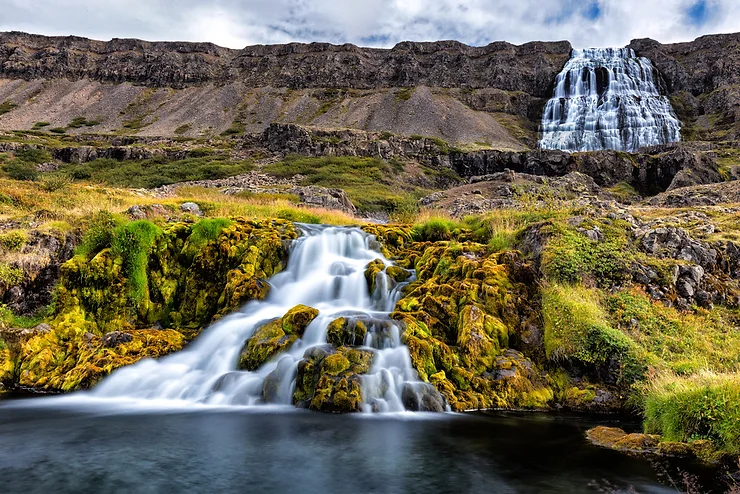
The waterfall is quite remote so depending on where you are stating you should set off early to reach it. Once there it is about a twenty-minute walk from the parking lot. The hike there is easy enough and very pretty. You will see several other smaller waterfalls as you make your way up to the falls. Dynjandi translates as thunderous falls and they most definitely live up to their name!
Sea kayaking in the fjords
When the weather is calm there is nothing better than a sea-kayaking tour for a change of perspective. This part of Iceland is known for its pristine waters and they are a joy to paddle if the weather is calm. Gliding through the glassy waters of the fjords and enjoying the incredible views is just sublime. One of the best places for sea kayaking is around the main town of Ísafjörður in the north.
Taking a dip in a hot spring pool
The well-organised and well-frequented Blue Lagoon is a far cry from the hot springs of the Westfjords. Hellulaug pool is a small coastal hot spring overlooking the Vatnsfjörður fjord. It is free to enter but there is a donation box to help fund its regular cleaning and maintenance.
Then there’s the man-made outdoor geothermal pool at Reykjafjörður fjord with its stunning views. There are several more hot springs dotted around the coast and mountains so do look out for them and ask at the campsites. As we know hot spring bathing is a favorite pastime for Icelandic peoples. It truly is a wonderful way to be in nature and soak weary muscles at the same time.
